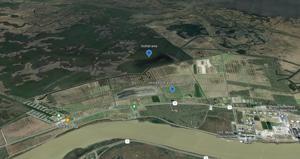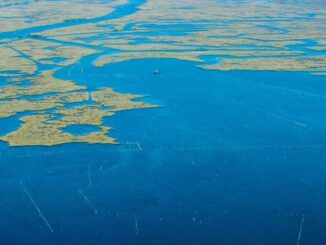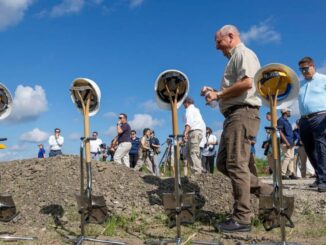
The state’s coastal authority said Thursday it remained committed to constructing its controversial $3 billion land-building project, responding to concerns that the unprecedented Mississippi River diversion could be shelved after Gov. Jeff Landry’s new administration sent mixed signals over its support.
While the Coastal Protection and Restoration Authority statement appeared unequivocal, the Mid-Barataria Sediment Diversion is still being challenged in court. One of Landry’s new point men on coastal issues had also said last week a report is being compiled on all aspects of the project to date for the governor and implied no position had been taken.
“We are committed to constructing this project, in addition to all the projects outlined in the Coastal Master Plan, and firmly believe it is an integral part of ensuring we can maintain and rebuild our state’s footprint,” the CPRA statement said.
CPRA statements on Mid-Barataria Diversion
It sought to clarify CPRA Chairman Gordon Dove’s comments last week, saying he and the Landry administration “have requested that CPRA prepare a comprehensive report on the history and status” of the project that could “serve as a resource for getting the administration up to speed.”
“This is not abnormal for incoming leadership, and due to the magnitude, importance, and visibility of this multi-billion-dollar project, compiling this information will be helpful to all in documenting the extensive efforts to date,” it said.
The statement added that “at this time, we have not received requests to re-analyze work such as the extensive modeling analysis or science used” to evaluate the project.
The project is strongly opposed by commercial fishers and Plaquemines Parish officials. The CPRA statement came a day after Plaquemines Parish re-issued a cease-and-desist order halting work at the site near the Ironton community on the west bank of the river.
That action is part of a complex set of legal maneuvers taken by the parish and the state involving the project. A lawsuit to enforce the parish order and to require the state to obtain parish permits as well as provide more information on the project’s potential to increase flooding chances in certain areas is pending in the 25th Judicial District Court in the parish.
A separate lawsuit filed by the state to block the parish from enforcing the stop work order has been moved from the 19th Judicial District Court in Baton Rouge to the Plaquemines court. The state expects to request the two suits to be combined and heard together during the next few months.
Diversion opponents have sought to capitalize on the change in the governor’s office, saying they believe Landry will kill the project.
“There’s a new sheriff in town, our new governor,” said George Ricks, a charter boat captain and one of the diversion’s most vocal critics.
He and other opponents hope Landry, a Republican elected in October, will be far more receptive to arguments that the diversion will do more harm than good – potentially increasing flood risks in Plaquemines Parish and harming the seafood industry.
“They lost their ace in the hole: John Bel Edwards,” said Mitch Jurisich, a Plaquemines council member and Empire oyster harvester who helped lead oyster companies in a lawsuit against the diversion.
Even if it’s not officially cancelled, keeping it in a limbo state could eventually snuff it out, Jurisich said.
“The longer it stands idle, the less like it’ll move forward,” he said.
Two major environmental organizations remained steadfast in their support for the project on Thursday.
“This sediment diversion is the most-researched public works project in our state’s history. It is the largest habitat restoration project in our nation’s history. It was designed using the best available science,” said a statement issued by the Coalition to Restore Coastal Louisiana, made up of business leaders and environmentalists.
“It will replicate the natural processes that built the land on which many people reading this are standing on right now, reintroducing fresh water, sediment and nutrients into areas that have been deprived of them for a century. It will make it possible for you to continue to stand here, to live here, to raise your children here in the years to come.”
The Restore the Mississippi River Delta coalition, created in 2008 in part to support state efforts to build large-scale diversions, said it also remains confident the diversion is the state’s best solution to rapid erosion in the Barataria Basin.
“The Mid-Barataria Sediment Diversion will offset decades of land loss and protect our communities by strengthening our connection to the vital resource that built our coast: the Mississippi River,” said Simone Maloz, campaign director for the coalition. “In a place losing land faster than almost anywhere else on the planet, we have no time to lose.”
The CPRA itself cited the scientific studies used to shape the project, calling them among “the most thorough, time intensive analyses ever conducted for an environmental restoration project.”
The project includes $360 million to mitigate the project’s impacts. But that hasn’t alleviated fears of flooding, sharply rising flood insurance rates and lost livelihoods due to changes in salinity affecting oysters and shrimp.
The Army Corps backed the project, deciding that its benefits in reducing storm surge flooding for residents and businesses inside the West Bank and Vicinity hurricane levees, and improvements in habitat for freshwater fisheries and wildlife outweigh its shortcomings.
The diversion is the flagship project in the state’s $50 billion, 50-year Coastal Master Plan, which aims to protect or restore the state’s rapidly-eroding coastline and improve flood risk reduction.
Paid for mostly with settlement money from the 2010 Deepwater Horizon oil disaster, the diversion is a first-of-its-kind project that would divert up to 75,000 cubic feet per second of sediment, nutrients and water through a levee and into Barataria Bay, where it could build and rebuild as much as 21 square miles of marsh over 50 years.





Leave a Reply